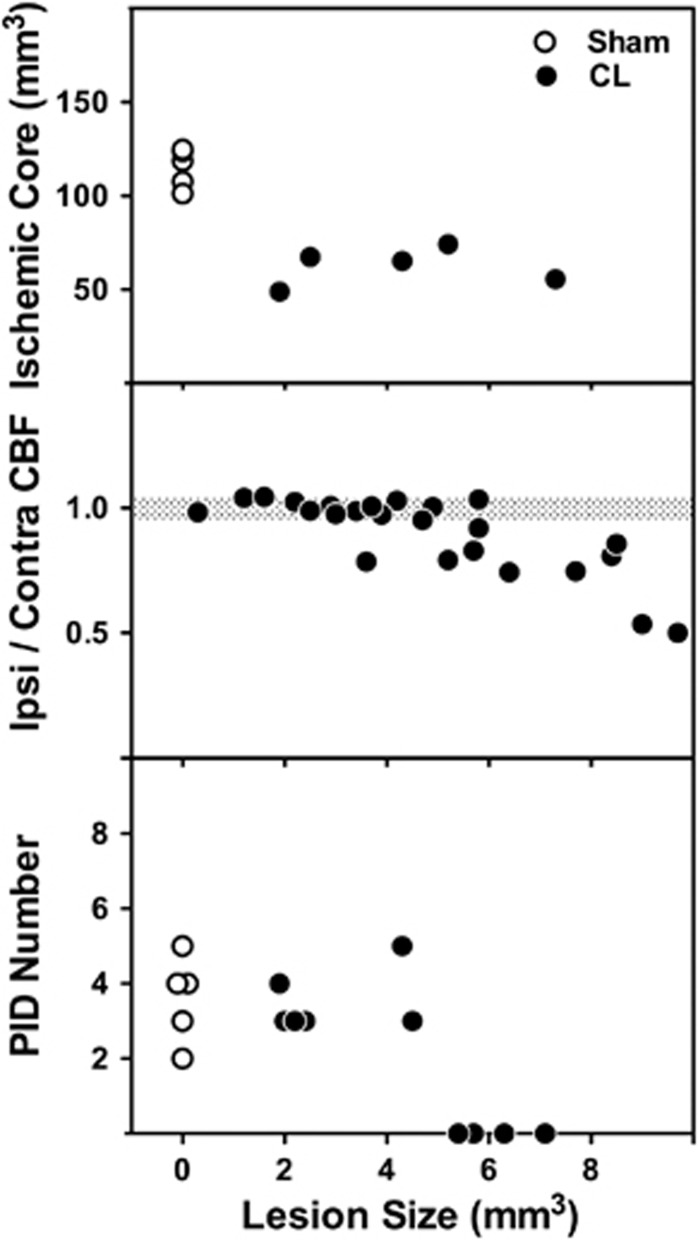Figure 5.
Impact of lesion size on preconditioning efficacy, baseline perfusion, and peri-infarct depolarization (PID) incidence. Upper panel: The volume of the preconditioning lesion was determined for animals that provided ischemic territory data of Figure 4. Protection was observed for lesions as small as 2 mm3 and did not vary with lesion size. Note that animals exhibiting white-matter edema were excluded from this analysis (see Figure 1). Middle panel: Freezing conditions were varied to produce cold lesions of varying size, and cerebral blood flow (CBF) in ipsilateral and contralateral cortex was compared 24 hours later. Reductions in ipsilateral CBF became prominent for lesions larger than 5 mm3. Such asymmetry was invariably associated with edema in subcortical white matter. Lower panel: Large lesions resulting in white-matter edema, which would have reduced baseline perfusion, also eliminated the occurrence of PIDs during subsequent occlusion. When monitored under isoflurane anesthesia, animals with small lesions that would have been protective exhibit PID incidence comparable to the sham group. CL, cryogenic lesions.

